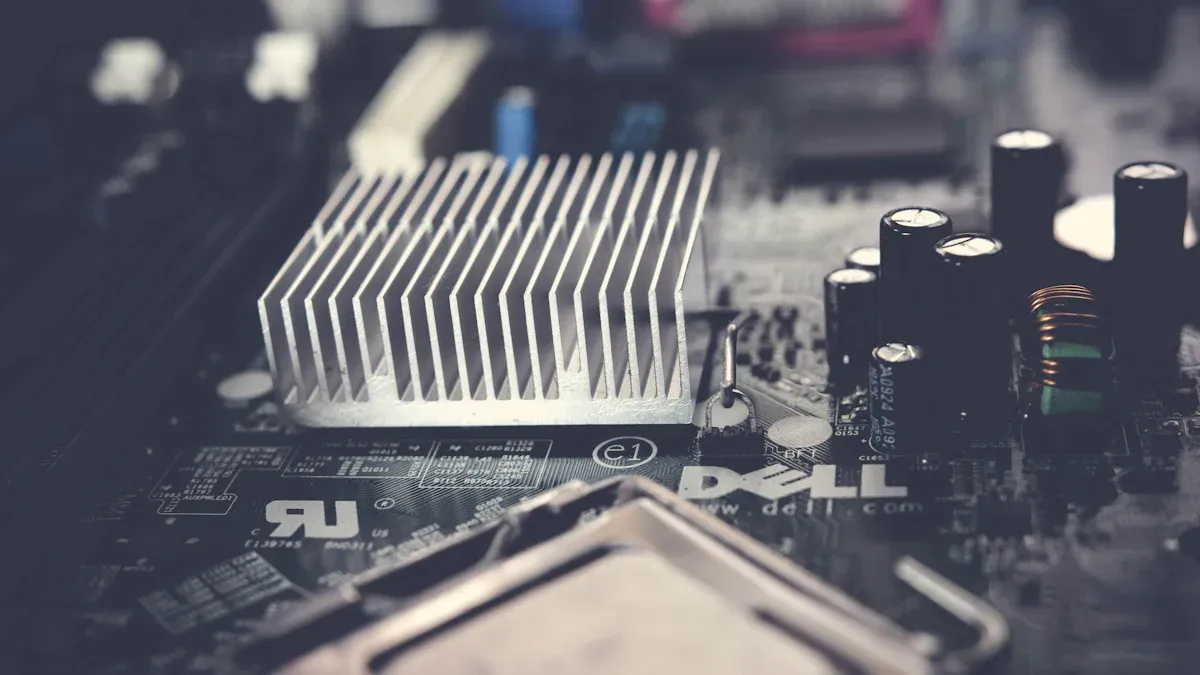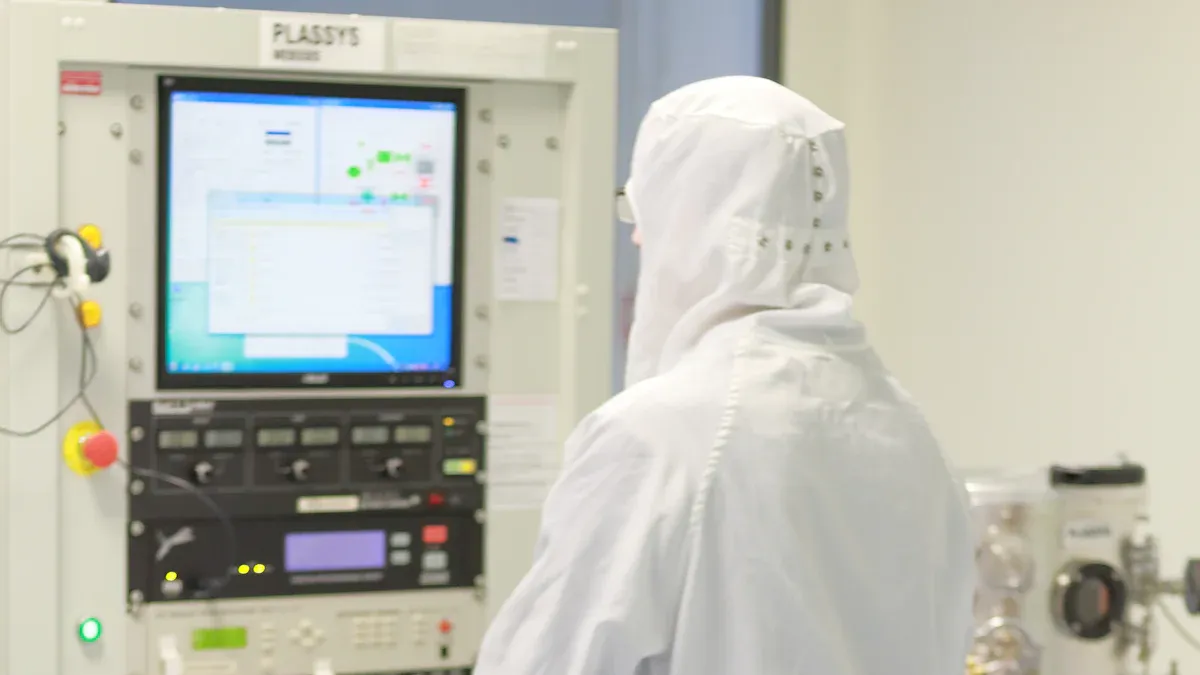
When choosing the right coating for semiconductor equipment, you must prioritize performance, durability, and cost-effectiveness. CVD SIC Coating often outshines SIC Coating due to its superior resistance to extreme temperatures and chemicals. This makes it ideal for demanding applications. However, understanding your specific needs ensures you pick the best option for your equipment.
Key Takeaways
- CVD SIC Coating is very strong and handles high heat well. It works great for tough jobs.
- SIC Coating costs less and works in less harsh conditions. It protects well and is easy to apply.
- Think about your equipment’s needs, like where it works and cost, to pick the best coating.
Understanding SIC Coating

What Is SIC Coating?
SIC Coating, or silicon carbide coating, is a protective layer applied to surfaces to enhance their durability and performance. It is made from silicon carbide, a compound known for its exceptional hardness and thermal stability. This coating is often used in industries where equipment faces extreme conditions, such as high temperatures or abrasive environments. By applying SIC Coating, you can protect your equipment from wear and tear, extending its lifespan.
Benefits of SIC Coating
SIC Coating offers several advantages that make it a popular choice for industrial applications. First, it provides excellent resistance to heat, allowing your equipment to perform reliably in high-temperature environments. Second, it protects against chemical corrosion, which is essential in industries like semiconductors. Third, its hardness ensures that surfaces remain scratch-free, even under heavy use. These benefits make SIC Coating a cost-effective solution for maintaining the performance and longevity of your equipment.
Tip: If your equipment operates in harsh conditions, SIC Coating can save you money on repairs and replacements over time.
Applications of SIC Coating
You will find SIC Coating used in a variety of industries. In semiconductor manufacturing, it protects components from chemical damage during production. It is also common in aerospace and automotive industries, where materials must withstand extreme heat and friction. Additionally, SIC Coating is used in mechanical seals, pumps, and other equipment that requires high durability. Its versatility makes it a valuable solution for many applications.
Exploring CVD SIC Coating
What Is CVD SIC Coating?
CVD SIC Coating stands for Chemical Vapor Deposition Silicon Carbide Coating. This process involves depositing a thin layer of silicon carbide onto a surface using chemical reactions in a vapor phase. The coating forms at high temperatures, creating a uniform and dense layer. This method ensures excellent adhesion to the substrate, making it highly durable. CVD SIC Coating is widely used in industries that demand precision and reliability, such as semiconductor manufacturing.
Note: The CVD process allows for precise control over the coating thickness, ensuring consistent performance across all treated surfaces.
How CVD SIC Coating Differs from SIC Coating
CVD SIC Coating differs from traditional SIC Coating in its application process and properties. While SIC Coating is typically applied as a sprayed or sintered layer, CVD SIC Coating uses a chemical vapor deposition process. This results in a more uniform and defect-free coating. Additionally, CVD SIC Coating offers superior resistance to extreme temperatures and harsh chemicals. These differences make it a preferred choice for applications requiring high precision and durability.
Advantages of CVD SIC Coating
CVD SIC Coating provides several key benefits. It offers exceptional resistance to wear, corrosion, and thermal stress. This makes it ideal for environments with extreme conditions. The coating’s smooth and uniform surface reduces the risk of contamination, which is critical in semiconductor production. Furthermore, its durability minimizes maintenance needs, saving you time and costs in the long run.
Tip: If your equipment requires high precision and operates in challenging environments, CVD SIC Coating is an excellent investment.
Comparing SIC Coating and CVD SIC Coating

Durability and Longevity
When it comes to durability, both SIC Coating and CVD SIC Coating offer impressive performance. However, CVD SIC Coating stands out due to its uniform and dense structure. This coating resists wear and tear more effectively, even in environments with constant mechanical stress. Its chemical vapor deposition process ensures a defect-free layer, which enhances its lifespan.
On the other hand, SIC Coating provides excellent durability for less demanding applications. It protects surfaces from scratches and abrasions, making it a reliable choice for equipment that doesn’t face extreme conditions.
Tip: If your equipment operates under heavy stress or requires long-term reliability, CVD SIC Coating is the better option.
Temperature and Chemical Resistance
CVD SIC Coating excels in environments with high temperatures and harsh chemicals. Its ability to withstand extreme heat without degrading makes it ideal for semiconductor manufacturing, where precision and stability are critical. Additionally, its resistance to corrosive chemicals ensures that your equipment remains protected in aggressive environments.
SIC Coating also offers good resistance to heat and chemicals, but it may not perform as well as CVD SIC Coating in extreme conditions. For applications that involve moderate temperatures and less exposure to corrosive substances, SIC Coating provides sufficient protection.
| Feature | SIC Coating | CVD SIC Coating |
|---|---|---|
| Temperature Resistance | High | Extremely High |
| Chemical Resistance | Good | Excellent |
Cost and Affordability
Cost is often a deciding factor when choosing between SIC Coating and CVD SIC Coating. SIC Coating is generally more affordable due to its simpler application process. This makes it a cost-effective solution for industries with tight budgets or less demanding requirements.
CVD SIC Coating, while more expensive, offers superior performance and longevity. The initial investment may be higher, but the reduced maintenance and extended lifespan of your equipment can offset the cost over time.
Note: Consider your budget and the long-term benefits of each coating before making a decision.
Application and Maintenance
The application process for SIC Coating is straightforward and less time-consuming. This makes it easier to apply on a variety of surfaces. Maintenance is also relatively simple, as the coating provides adequate protection against wear and corrosion.
CVD SIC Coating, due to its precise chemical vapor deposition process, requires specialized equipment and expertise. While this may increase the initial effort, the result is a highly durable and low-maintenance coating. Its smooth surface reduces the risk of contamination, which is particularly important in semiconductor manufacturing.
Reminder: If your equipment requires minimal maintenance and operates in a critical environment, CVD SIC Coating is worth the extra effort.
Choosing the Best Coating for Semiconductor Equipment
Key Factors to Consider
When selecting the right coating for your semiconductor equipment, you need to evaluate several critical factors. Start by considering the operating environment. If your equipment faces extreme temperatures or exposure to harsh chemicals, the coating must provide exceptional resistance. Durability is another key factor. A long-lasting coating reduces maintenance needs and extends the lifespan of your equipment.
Cost is also important. While some coatings may have a higher upfront cost, they could save you money in the long run by minimizing repairs and replacements. Finally, think about the precision required for your application. For semiconductor manufacturing, where contamination can disrupt production, a smooth and uniform coating is essential.
Tip: Create a checklist of your equipment’s needs to compare how each coating meets those requirements.
When to Choose SIC Coating
SIC Coating is a great choice if your equipment operates in moderately harsh conditions. It provides reliable protection against heat, scratches, and chemical corrosion. This makes it suitable for industries like automotive, aerospace, and general manufacturing. If your budget is limited, SIC Coating offers a cost-effective solution without compromising on basic performance.
You should also consider SIC Coating for applications where the coating process needs to be quick and straightforward. Its simpler application method allows for faster turnaround times, which can be beneficial for less demanding environments.
Reminder: SIC Coating works best when your equipment doesn’t face extreme stress or requires only moderate protection.
When to Choose CVD SIC Coating
CVD SIC Coating is the ideal choice for high-performance applications. If your equipment operates in extreme temperatures or comes into contact with aggressive chemicals, this coating provides unmatched resistance. Its uniform and defect-free surface ensures precision, making it perfect for semiconductor manufacturing and other critical industries.
You should also choose CVD SIC Coating if you want to minimize maintenance. Its durability and smooth surface reduce wear and contamination, saving you time and effort. While the initial cost may be higher, the long-term benefits often outweigh the expense.
Note: If your equipment demands high precision and operates in challenging environments, CVD SIC Coating is worth the investment.
Final Recommendation
The best coating for your semiconductor equipment depends on your specific needs. If you prioritize affordability and your equipment faces moderate conditions, SIC Coating is a practical choice. However, if your application requires high precision, durability, and resistance to extreme environments, CVD SIC Coating is the superior option.
Evaluate your equipment’s operating conditions, budget, and maintenance requirements before making a decision. By aligning the coating choice with your needs, you can enhance performance, reduce costs, and extend the lifespan of your equipment.
Takeaway: Always match the coating to the demands of your application to achieve the best results.
SIC Coating and CVD SIC Coating differ in application, durability, and resistance. CVD SIC Coating offers superior performance in extreme environments, while SIC Coating provides a cost-effective solution for moderate conditions. You should evaluate your equipment’s needs carefully. Matching the coating to your requirements ensures optimal performance and long-term savings.
FAQ
What is the main difference between SIC Coating and CVD SIC Coating?
SIC Coating uses simpler application methods, while CVD SIC Coating involves chemical vapor deposition. CVD SIC Coating offers better durability, precision, and resistance to extreme conditions.
Tip: Choose based on your equipment’s operating environment and performance needs.
Is CVD SIC Coating worth the higher cost?
Yes, if your equipment operates in extreme environments. Its durability and low maintenance reduce long-term costs, making it a smart investment for high-performance applications.
Can SIC Coating handle high temperatures?
SIC Coating performs well in high-temperature environments. However, for extreme heat or critical applications, CVD SIC Coating provides superior thermal resistance and reliability.
Reminder: Always match the coating to your equipment’s specific requirements.


